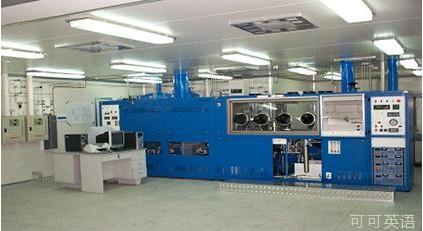
Science and Technology Materials science Cracking a problem
科技 材料科學 通過裂紋解決問題
Another use for a fashionable, new material
一種流行新材料的新用途
LIKE all other human activities, science is subject to fads.
像其它人類活動一樣,科學是一個時尚主題。
One of the latest is for graphene.
最新的話題是關于石墨烯的。
This wonder material—a form of carbon that comes in films a single atomic layer thick—won Andre Geim and Konstantin Novoselov the Nobel prize for physics last year.
作為碳的一種形式,這種源自膠帶操作的奇妙材料只有單原子層厚度,發明者安德烈·杰姆和克斯特亞·諾沃塞洛夫為此獲得了去年的諾貝爾物理學獎。
Because of its unusual electrical properties it has been touted as a way of making everything from touch screens to solar cells.
由于石墨烯非同尋常的電特性,它被吹噓為制造一切產品的新途徑--從觸摸屏到太陽能電池。
Now a humbler use is being proposed.
如今石墨烯的一種低層次應用被提出來。
Another of graphene's qualities is that it is strong. That, suggests Erica Corral of the University of Arizona, makes it ideal for reinforcing ceramics.
它的另一特性是機械強度高,因而被亞利桑那大學的埃里卡·科拉爾視為加強陶瓷材料硬度的一種理想材料。
Engineers like ceramics because they can be heated without melting. Unlike metals and plastics, though, they are brittle.
工程師喜歡陶瓷材料,因為它們加熱時不會融化,這點不像金屬和塑料,盡管它們是脆的。
Because they crack easily, using them in places that are exposed to a lot of physical punishment is difficult.
因為陶瓷材料易碎,因此將其用于高物理強度的場合非常困難。
But a paper just published in the American Chemical Society's journal, Nano, by Dr Corral and her colleagues, suggests a sprinkling of graphene may deal with that.
但在美國化學協會雜志剛發表的一篇論文《納米》中,科拉爾博士和她的同事們認為,加入少許石墨烯也許就能解決這個問題。
The ceramic they experimented with was silicon nitride, a material much admired in the aerospace industry.
她們測試的陶瓷材料是氮化硅--一種在太空工業中飽受贊譽的材料。
Components are made by sintering it in powder form in a mould, at 1,000oC, for several hours.
這些部件是將氮化硅粉末置于模具中,處于1000攝氏度高溫下燒制數小時而成。
Unfortunately, graphene disintegrates above 600oC, so the team had to think of a clever way of mixing the two materials.
不幸的是,溫度高于600攝氏度,石墨烯就碎裂,因此研究團隊必須想出一種巧妙辦法將兩種材料融合在一起。
Their solution was to take advantage of graphene's electrical conductivity, by running a current through the mixture. This generated a temperature of 1,650oC—more than enough to sinter the silicon nitride.
解決辦法就是利用石墨烯的導電特性,將電流通過混合物,產生的1650攝氏度的高溫足以燒結氮化硅,而石墨烯也沒有碎裂。
The graphene, however, did not break down.
其原理尚未完全弄清楚。
Why, is not entirely clear. But rapid electrical heating did not seem to affect it in the way that slower oven heating would.
但與通過熔爐緩慢加熱不同,快速電加熱對石墨烯看起來沒有什么影響。
The result was a composite that was able to withstand twice as much pressure as unalloyed silicon nitride.
和純氮化硅相比,其合成物能經受的壓力強度翻倍。
When the team examined what they had done under a microscope, they found that the graphene had wrapped itself around the silicon-nitride grains, forming continuous walls.
當研究團隊在顯微鏡下觀察合成物時,他們發現石墨烯包裹在氮化硅顆粒周圍,形成了連續的"壁"。
When they looked at samples that they had whacked hard enough to come close to cracking, they found that these walls were encouraging the cracks to spread in three dimensions—in contrast with the two-dimensional pattern usually seen in silicon nitride.
當檢查這些不斷敲擊而近乎開裂的樣品時,他們發現這些"壁"有助于裂紋向三個維度上延伸,和通常在氮化硅上觀察到的"二維裂解模式"形成了對比。
Dr Corral suspects that extending cracking into the third dimension dissipates the energy faster and stops the fault spreading.
科拉爾博士推測,那種裂紋擴展為三個維度使能量擴散的更快,同時制止了缺陷的擴展。
A cracking idea, as it were.
通過三維裂紋來增強陶瓷材料強度,真是一個絕妙的點子!











